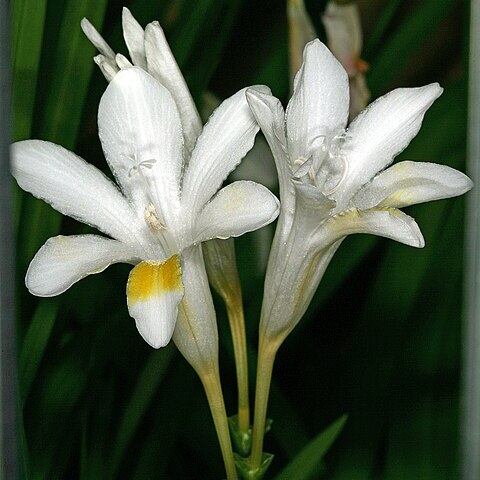Herb 10–40 (–55) cm high. Corm 1.5 cm diam.; tunic of fine pale fibres. Leaves 4–8, basal, erect, linear-ensiform, 8–27 cm long, 5–10 mm wide. Stem wiry, unbranched, slightly papillose near base. Spike 3–7-flowered. Bracts oblong, truncate, 5–8 mm long, herbaceous with hyaline margins. Flowers white to cream, with yellow markings, shaded purple on outside of tube. Perianth tube 2–3.5 cm long, narrow in basal 6–8 mm, expanded above; lobes elliptic, obtuse, subequal, 1–1.5 cm long, 6–9 mm wide, dorsal lobe slightly hooded, other lobes narrower, spreading. Filaments c. 2 cm long; anthers c. 6 mm long. Ovary c. 4 mm long; style exceeding anthers. Capsules 1–1.5 cm long, rugose, green. Seeds 3–4 mm diam., brown. Bulbils produced in lower leaf axils.
Cormous geophyte, 8-20 cm, corm tunics of fine fibres, stem with axillary cormlets underground. Leaves sword-shaped. Flowers creamy yellow or white, then often with mauve reverse, with broad yellow markings, sweetly scented.

